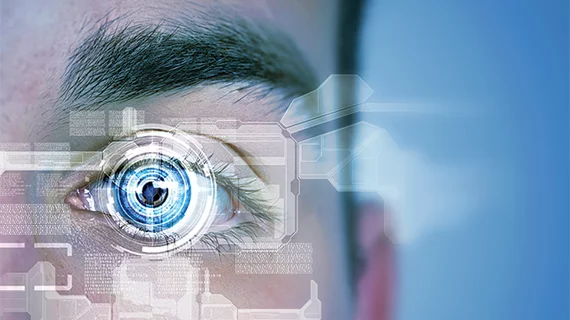AI-based technique detects early diabetes complication with 98% accuracy
An AI-driven approach for detecting an early sign of diabetic retinopathy achieved an accuracy rate of more than 98 percent, according to a study by Australian-Brazilian researchers published in Computers in Biology and Medicine.
The results could mean a quicker and cheaper solution for diagnosing the disease earlier and possibly prevent loss of eyesight.
“Our AI-driven approach delivers results that are just as accurate as clinical scans but relies on retinal images that can be generated with ordinary optometry equipment,” lead study investigator Dinesh Kant Kumar, PhD, professor with the Royal Melbourne Institute of Technology (RMIT), said in a statement. “Making it quicker and cheaper to detect this incurable disease could be life changing for the millions of people who are currently undiagnosed and risk losing their sight.”
Diabetic retinopathy is described as a diabetic complication that affects the eyes and is the leading cause of vision loss in adults with diabetes, study author Parham Khojasteh, PhD, biomedical and medical engineer with the RMIT School of Engineering, et al. noted.
Since there aren’t many early signs for the disease, early diagnosis is a critical key for how much vision a patient retains. The presence of exudates, or fluid on the retina, is an early sign of the disease, and fluorescein angiography and optical coherence tomography scans are currently the most accurate clinical methods for diagnosing diabetic retinopathy.
For the study, researchers compared three deep-learning techniques for the detection of exudates using fundus images. The results revealed that using a support vector machine algorithm and the ResNet-50 model, a convolutional neural network, together produced an overall accuracy rate of 98.2, with a sensitivity of 0.99 and a specificity of 0.96.
“For every single person in Australia who knows they have diabetes, another is living with diabetes but isn’t diagnosed. In developing countries, the ratio is one diagnosed to four undiagnosed. This results in millions of people developing preventable and treatable complications from diabetes-related diseases,” Kumar wrote. “With further development, our technology has the potential to reduce that burden.”
Last year, an AI-based grading system successfully diagnosed two patients with diabetic retinopathy. The results showed potential for improving the efficiency in screening for diabetic retinopathy in primary care.

